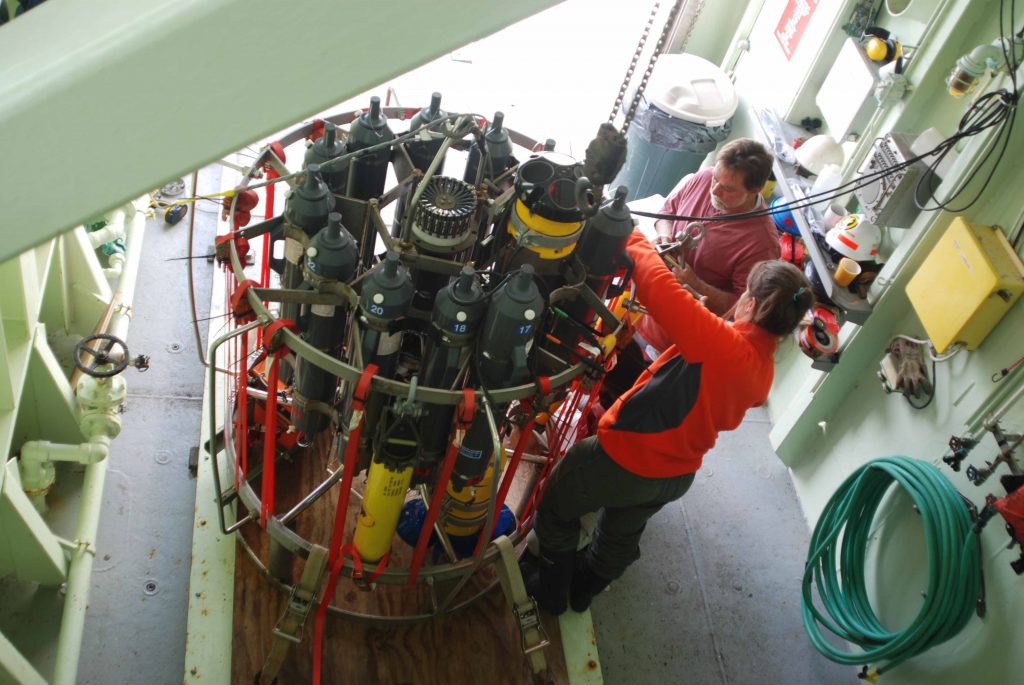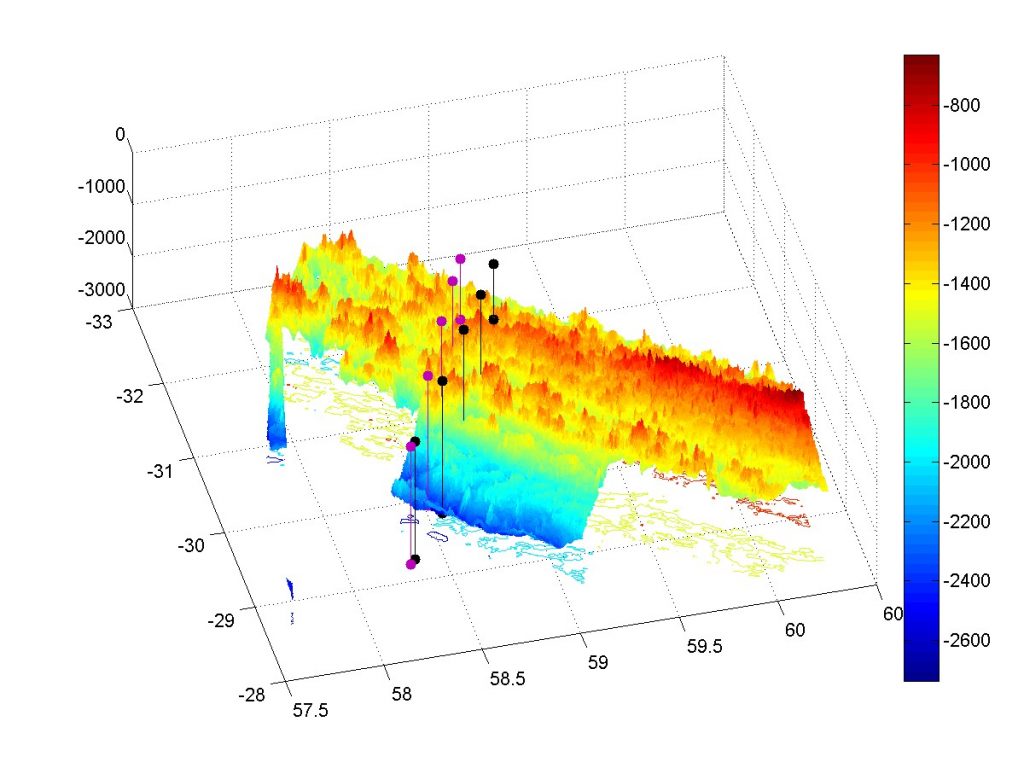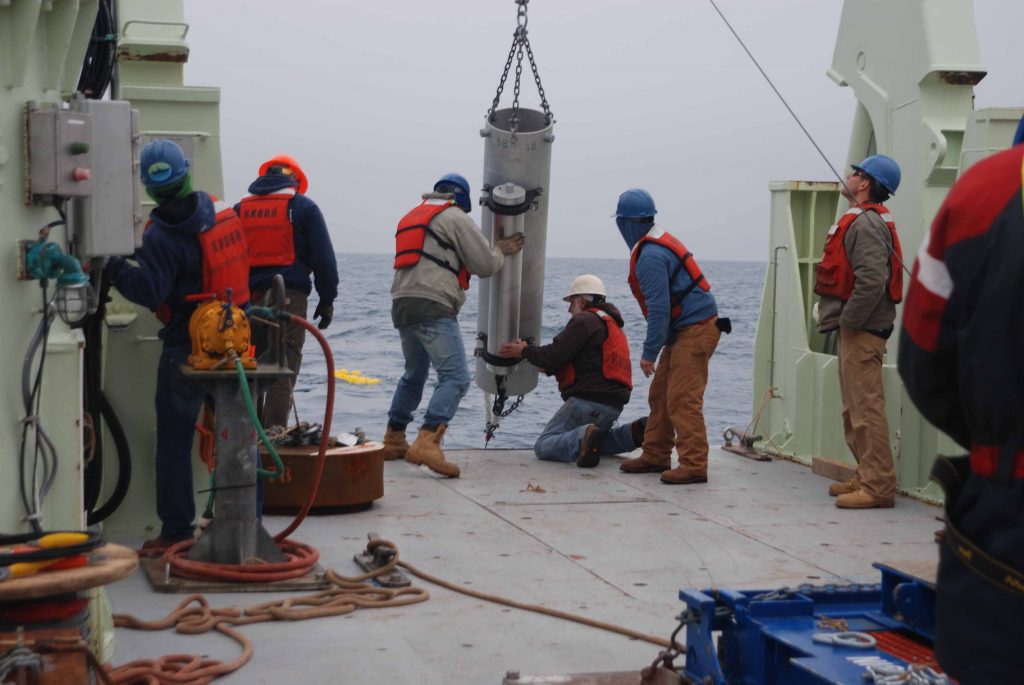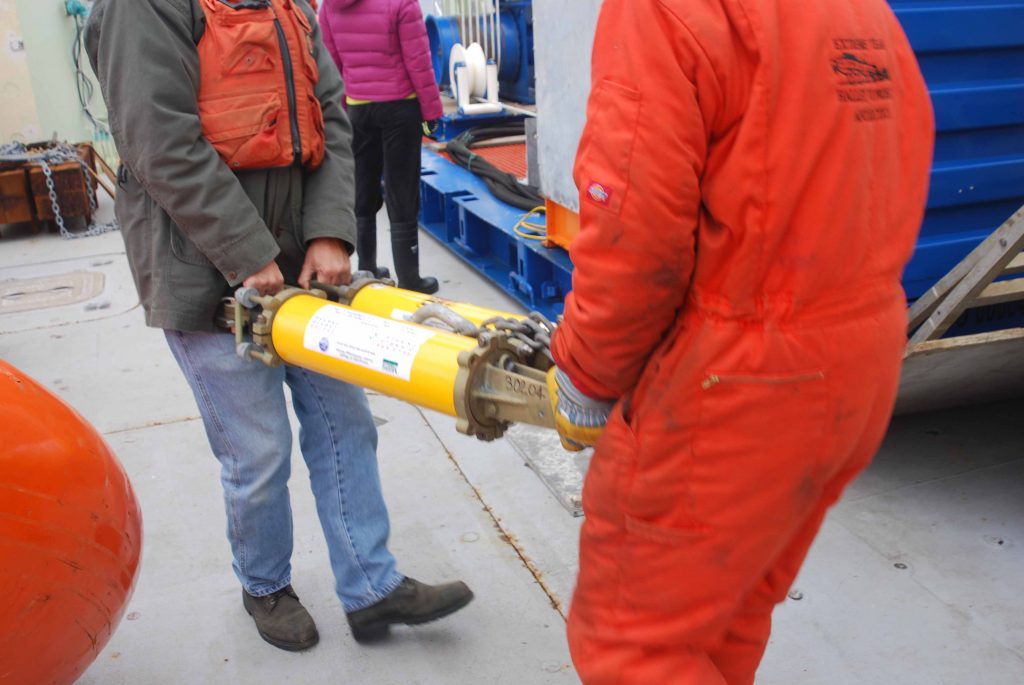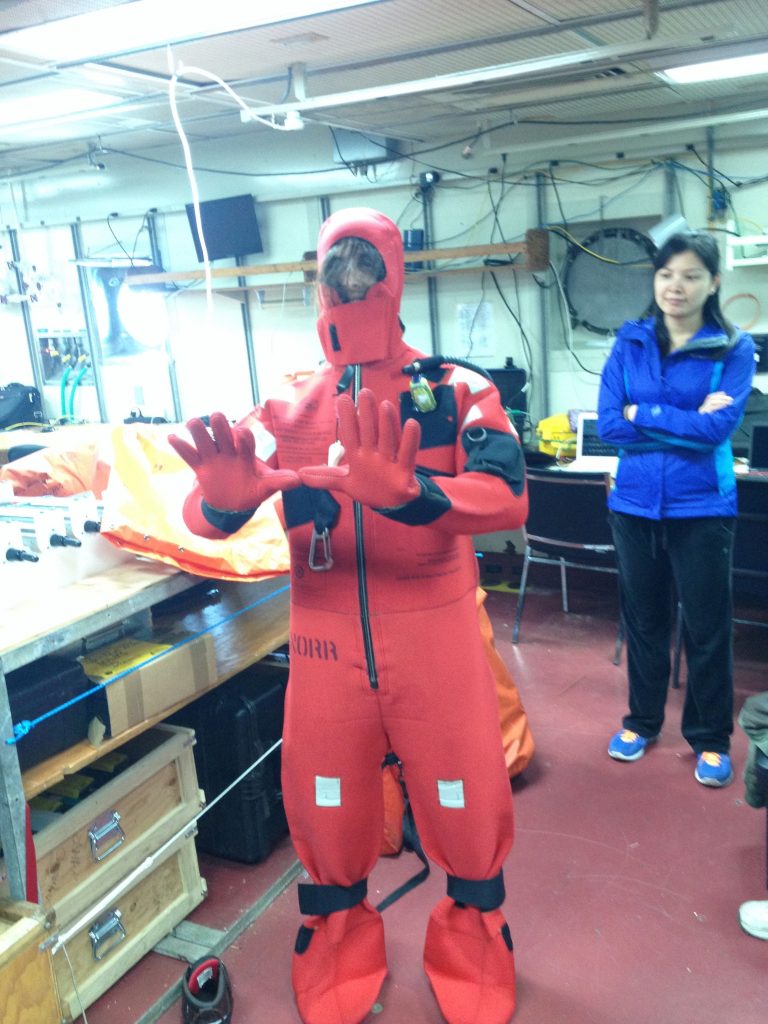A Rare “Sight” : A Man on an Island
We are slowly getting closer to the Scottish coast, the eastern end of our “line”. We have just 2 or 3 more moorings to deploy before we turn back west and re-trace our steps, or maybe more accurately, our wake. The air and water temperatures are warmer here – almost 60F! A heat wave! It…
No weekends at sea!
I took the weekend off from blogging, but that doesn’t mean that science stopped on Saturday or Sunday. Our work continues almost 24 hours a day, 7 days a week. Research vessels like the R/V Knorr are so expensive to operate that once we are at our work site, we need to keep moving along…
Mountains Beneath the Waves
For the past several days, we have been making our way over an underwater mountain chain called the Mid-Atlantic Ridge, or MAR for short. This ridge, which snakes its way southward from Iceland through the North and South Atlantic, results from the spreading of two tectonic plates and the bubbling up of molten rock to…
Access to research vessels for people with disabilities
I’m well aware that there is tremendous variation in the civil rights of people with disabilities from country to country. But I was very surprised to learn yesterday that there is a restriction in the U.K. that would probably prevent me from participating in an oceanographic research cruise on some U.K. research vessels.
Meals on board the R/V Knorr, or Why Blind People Hate Buffets!
This is our fifth day at sea. The weather is still cool and foggy, but the winds have dropped to almost nothing. Because high winds lead to high seas, we are often most interested in the wind forecast and not so much in the temperature or rain forecasts. Tomorrow we might be near the edge…
First Sound Source Mooring
This morning we woke up early to get ready for the first sound source mooring deployment on this cruise leg. As described in earlier posts, the sound sources will be used to track subsurface floats drifting with the deepest currents in the North Atlantic. Each sound source will transmit an 80-second long acoustic tone once…
Oceanography and Sound
Sound is used by humans and marine life to communicate underwater. This is partly because electro-magnetic waves (including light) do not penetrate very far through water. Sunlight is more or less gone below a few 10s of meters, and the rest of the ocean depths are in complete darkness. On the other hand, sound travels…
Physical versus Intellectual ability
Today I was recalling a topic that I discussed years ago with a professional personal coach. At the time, I was preparing to go on another research cruise, this time on an unfamiliar research vessel (from Greece) and with many students and scientists I had not met previously. I was quite anxious about the trip….
Good News for Floats, Part 3
Picking up from Part 2 (because I forgot to paste in the text for the whole story).. The monitoring float heard very clear signals from two of the three sound sources, and a hint of the third one too. The latter sound source is rather far away from where the floats were deployed, and on…
Remember Gumby?
Right after leaving port this morning, we had a routine safety meeting and drill. As part of this, we were shown how to use short-term oxygen systems (with just enough air to get out of your cabin in the event of a fire). I couldn’t see the demonstration, so I just asked if I could…
About Amy Bower
 Amy Bower is a physical oceanographer at the Woods Hole Oceanographic Institution. She has been chasing ocean currents in the Atlantic and Indian Oceans for over 25 years, primarily by releasing acoustically tracked floats far below the sea surface. Legally blind since her mid-20s, Amy uses adaptive technology to continue her research.
Amy Bower is a physical oceanographer at the Woods Hole Oceanographic Institution. She has been chasing ocean currents in the Atlantic and Indian Oceans for over 25 years, primarily by releasing acoustically tracked floats far below the sea surface. Legally blind since her mid-20s, Amy uses adaptive technology to continue her research.
Related Links
Subscribe by Email
Completely spam free, opt out any time.
